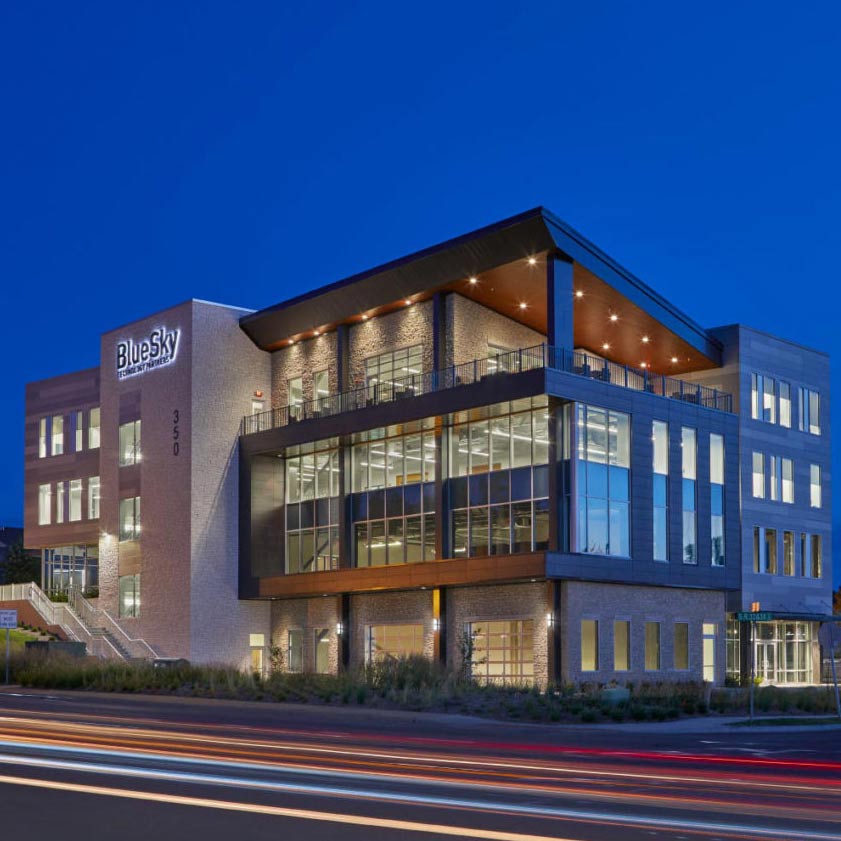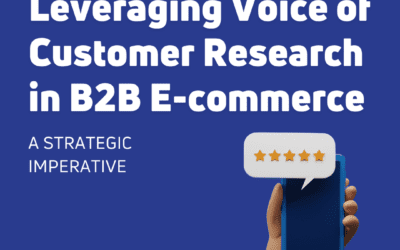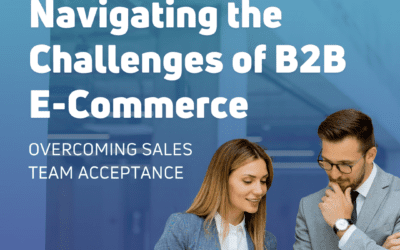In the e-commerce world, a microsite, multisite, or extended site has many interpretations or definitions. Collectively, we will refer to them as an “e-site,” which in general describes the idea of having multiple websites that address different business needs in an...
Insights
10 eCommerce Specific Heuristics to Live By
BlueSky Commerce Blog
Featured
Related Posts
Speed Up, Cash In – Increase E-Commerce Performance
Why Performance Matters In today's digital age, the performance of an e-commerce site is a critical factor in determining the success of an online business. A fast, reliable, and responsive e-commerce platform enhances the user experience and directly impacts sales...
Have Questions?
Get In Touch

BlueSky Commerce
- BlueSky Commerce Partners with commercetools
- KLaunch and BlueSky Commerce Announce FoodBridge, An AI-Powered E-Commerce Solution Created for the Financial Stability of Food Banks
- Catch up with BlueSky Commerce at Shoptalk 2023!
- Industry E-Commerce Sales Veterans Leading the Way at BlueSky
- BlueSky Sponsors Brooke’s Place 2022 Hope Fore Tomorrow Golf Outing June 6, 2022
- BlueSky Commerce announces strategic partnership with Fluent Commerce
- 7 Ways to Modernize Your E-Commerce Site Design
- Creating a Digitally Native Culture: A 360 Approach to Digital Transformation
- How to Take Your B2B Brand Direct-to-Consumer
- BlueSky Commerce Sponsors Brooke’s Place Hope Fore Tomorrow Golf Outing
Follow Us
10 eCommerce Specific Heuristics to Live By
We Can’t Stress Enough How Today’s Shoppers Expect a Seamless, Intuitive, and Quick Experience
It’s imperative that your shoppers feel guided, not forced through their purchase process. And while you might believe you have the perfect path to purchase mapped out, you may want to re-evaluate your process.
We’ve fleshed out a guide based on Nielsen’s heuristics, which are general usability guidelines. Following these guidelines can greatly improve the user experience for shoppers.
#1. ALWAYS LET YOUR USERS KNOW WHERE THEY ARE IN A PROCESS
Nielsen calls it: Visibility of system status
You should always let your users know where they are in a process, such as in the checkout step. This ensures that they know what comes next and how much longer they have till the process is completed. This heuristic helps prevent cart abandonment.
#2. USE BUYER LANGUAGE
Nielsen calls it: Match between system and the real world
Your site should use buyer’s language with words, phrases, and concepts familiar to the shopper, rather than system-oriented terms. Use simple language. Checkout flow is not the time to use technical jargon or complicate the process for the user. This heuristic helps to prevent user confusion and streamlines or simplifies the shopping experience.
#3. GIVE YOUR USERS OPTIONS AND ROOM FOR MISTAKES
Nielsen calls it: User control and freedom
Ensure that you give your users room for options and errors. Many times, users make mistakes during their shopping experience. Give them the freedom to correct those errors by adding items like ‘remove’ and ‘edit’ buttons. This prevents users from having to start the process over again and saves time. Another great example of this heuristic is to give buyers the option to checkout as a guest, rather than commit to being a registered user.
#4. BE CONSISTENT IN YOUR SHOPPER LANGUAGE AND BRANDING TO PREVENT CONFUSION
Nielsen calls it: Consistency and standards
Using call-to-action (CTA) language on your buttons, such as ‘Add to Cart’, ‘Add to Bag’, ‘Go to Checkout’, etc. are well understood by most online shoppers. However, the confusion comes from using different call-to-action terms interchangeably. Do your users a favor and make sure that your CTA language is consistent to prevent buyer frustration and confusion. Your branding and language are something your repeat users get used to over time so that they can easily navigate through your eCommerce site.
#5. WARN USERS OF IMPENDING ERRORS, AND PRESENT CONFIRMATION OPTIONS BEFORE THEY COMMIT TO AN ACTION
Nielsen calls it: Recognition rather than recall
Help prevent memory overload on your users by making objects, actions, and options visible. Anything you can do to prevent overthinking in the checkout process will help users stay engaged in the process and will increase the likelihood that they will complete their purchase. For example, if you offer free shipping, make sure that is extremely visible throughout the checkout process. Shipping cost is one of the biggest reasons users abandon their carts, so keeping that message visible will help with conversion.
#6. REDUCE MEMORY LOAD ON YOUR BUYERS
Nielsen calls it: Recognition rather than recall
Help prevent memory overload on your users by making objects, actions, and options visible. Anything you can do to prevent overthinking in the checkout process will help users stay engaged in the process and will increase the likelihood that they will complete their purchase. For example, if you offer free shipping, make sure that is extremely visible throughout the checkout process. Shipping cost is one of the biggest reasons users abandon their carts, so keeping that message visible will help with conversion.
#7. MAKE THE BUYING PROCESS QUICK FOR BUYERS
Nielsen calls it: Flexibility and efficiency of use
Having to repeat the same action, such as filling out the same form fields, prolongs the checkout process and takes up unnecessary time for the user. One way to create efficiency is the option to have their payment information saved in their user account. Also, single-page checkout is popular for this reason as well. The less work your users have to do, the more likely they are to repurchase from your site.
#8. LIMIT DISTRACTIONS FOR USERS BY HAVING A CLEAN DESIGN
Nielsen calls it: Aesthetic and minimalist design
Limit the number of links on the checkout pages and remove unnecessary images, and use clean navigation, and form fields. If you create less distraction for the user, they can concentrate on their shopping decisions, rather than trying to figure out how to navigate and use your site.
#9. ENSURE THAT USERS UNDERSTAND WHERE THEY MAKE ERRORS IN THEIR SHOPPING EXPERIENCE
Nielsen calls it: Help users recognize, diagnose, and recover from errors
Error messages should be expressed in plain language, precisely indicate the problem, and constructively suggest a solution for the user to be able to correct the problem. This makes it easy for them to correct any issue (such as missing information from a required form field), and move forward with the checkout process without becoming frustrated or confused.
#10. HAVE A PLAN FOR HELPING YOUR USERS THAT ARE HAVING ISSUES
Nielsen calls it: Help and documentation
If any of your users should happen to run into issues with an order or trouble using your e-commerce site, then you need to have a plan for providing technical support or user service. Your online experience should try to mirror your in-store experience, so in lieu of having associates to help service your user, you should have a visible area for providing assistance to those users at all stages of the shopping experience. Some examples of this include having an FAQs section, User Support page or widget, LiveChat assistant, etc.
*Originally posted November 2018
Start the Conversation
BlueSky’s unmatched commerce expertise allows us to help our clients understand how to utilize omnichannel and business solutions to reach, attract, engage, and grow customers.

Related Posts
7 Effective Ways to Increase Your Average Order Value (AOV) in B2B and B2B2C E-commerce
In the competitive B2B and B2B2C e-commerce landscape, businesses are grappling with slower sales growth and the need to find new revenue streams. Leaders responsible for e-commerce strategies must focus on innovative approaches to recover lost revenue and drive...
Leveraging Voice of Customer Research in B2B E-commerce: A Strategic Imperative
Understanding stakeholder needs is crucial in the rapidly evolving landscape of B2B commerce. Conducting Voice of Customer (VoC) research has emerged as a strategic imperative for businesses aiming to transition to B2B e-commerce successfully. This blog will outline...
Navigating the Challenges of B2B E-commerce: Overcoming Sales Team Acceptance
The digital revolution has reshaped the way businesses operate, and B2B e-commerce has emerged as a critical avenue for growth. However, transitioning to B2B e-commerce is challenging, and one significant hurdle is gaining acceptance from your sales team. This...



